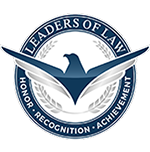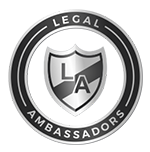Table of Contents
Toggle
Frighteningly, head injuries are quite common in children. Sports falls, and accidents are cited as some of the most common causes of head injuries in children, especially those in their teens. Bicycle-related head injuries are most common in children aged 5 and up.
Head injuries may result in permanent disability, depending on the extent of the injury. Many head injuries result in a loss of function in the senses or in mobility. Some may even require long-term or lifelong care.
Wearing a helmet can lessen the severity of and sometimes prevent serious head injuries in children. Parents and other caregivers should always make sure that children are wearing helmets while biking, playing sports, roller skating, skateboarding, or skiing.
How Do You Pick a Helmet?
Walk into any sporting goods store or browse the internet and you will find that there are dozens and dozens of helmets to choose from. How do you make sure you pick the one that is best for your child?
First, you should pick a helmet that has a Consumer Product Safety Committee sticker inside the helmet. All helmets manufactured after 1999 should have these stickers.
Do not worry about the helmet’s price tag. In one series of tests conducted on helmets, lower-priced helmets performed just as well as their more expensive counterparts.
If you have received a hand-me-down helmet from a generous friend or relative, make sure that the helmet does not have any visible cracks or has been in some type of accident. Keep in mind that not all cracks in a helmet are visible from the outside. Bicycle helmets are designed to take only one impact and should be discarded after one crash or impact to the helmet.
The fit of a helmet appears to be the most important factor when it comes to its ability to protect the skull from injury. To make sure a helmet fits your child properly, check the following:
- The chin strap should have a snug fit around the child’s face and jaw.
- When the child moves his or her head back and forth and up and down, the helmet stays in place.
- Have your child open his or her mouth. The lower jaw should pull the chin strap down.
- The front of the helmet should come down low over the forehead. It should also be level. The lower edge of the helmet should be one or two fingers’ width above the child’s eyebrows.
- Check to make sure that the child’s hearing and vision are not obstructed by the helmet.
- To make the helmet fit more snugly, internal pads may be added. Check with your helmet’s manufacturer for information on where to purchase these pads.
In addition, consider purchasing a helmet that is a bright color to improve your child’s visibility to drivers and others.
If your child is between two sizes in a helmet, choose the larger one.
Helmets Save Lives in Colorado
Although helmets are not required by Colorado law, wearing a helmet can help prevent serious head injuries if your child falls or is involved in a collision.
Experienced Colorado personal injury attorneys are able to help with accident claims, including those involving children. These attorneys know how to fully investigate a collision to show the strength and merits of their clients’ cases.
Many at-fault drivers try to shift liability to victims, even if they are children. However, skilled attorneys hold these individuals accountable for the injuries and harm they have caused and ensure that their clients’ legal rights remain protected both during a personal injury claim and after it has concluded.
Call Today to Schedule a Free Consultation with Jennifer Donaldson
Colorado personal injury attorney Jennifer Donaldson is a zealous advocate for her clients, especially children. If your child has been injured due to the negligence of someone else, contact our Denver bicycle accident attorney at Donaldson Law, LLC today to schedule a free consultation and learn about your legal options.

















